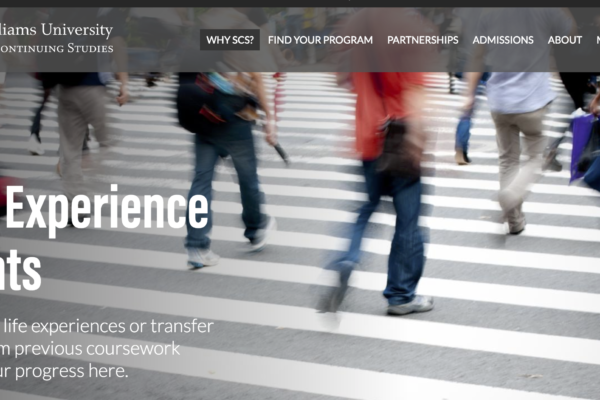Personalization has acquired a bit of reputation as being too intrusive, too fake, and well, a little creepy. But Tuesday at #heweb16 Oho Interactive’s Georgy Cohen and Jim Dalglish argued that there are ways to do personalization that yield great results without crossing the line into creepiness.
Amazon.com is likely the king of these types of interactions, with the targeted recommendations that show up for you on their home page. And that content is helpful…and wildly successful. A Forester analyst say Amazon’s conversions from on-site recommendations could be as high as 60%.
“If you’re serving me content that is relevant to me…I’m going to feel better about your company is what the research shows,” Cohen said.
The arguments against personalization have traditionally been: it’s creepy; it takes too much content and I don’t have the time or the resources for all that work. However, Cohen and Dalglish said with a little work ahead of time, personalization can be an amazing way to increase your results.
Real-time personalization could be a natural extension of your content-strategy, Cohen said.
As with any project, you want to define your goals and understand your user needs, Cohen said.
In the case of good personalization that means defining a customer’s needs and the identifying their journey, structuring your Information Architecture around those needs and journey and then placing relevant content along that journey.
Personalization introduces an opportunity to increase your expertise by going beyond analytics, knowing each individual user, Cohen said. Performing user research and pairing it with your content strategy create a one-two punch.

The goals for your research might be to discover how students are finding or picking a school or what is the perception of the school.The research can help you identify personas for your visitors– archetypes that help you understand who is visiting your site and why.
Dalglish talked about how Oho worked with Roger Williams University to implement a personalization program for adult learners. The research showed users came to the site through a search and liked a night time picture that was on the site. They want to get to their programs quickly and hear direct messages about how the school can help them.
There’s a data collection engine running underneath the site. The process is more cost effective than buying more prospect names and doesn’t cause a school to lower their admissions standards to meet a goal, Dalglish said.
1 to 1 marketing happens from the first time a visitor stops by the site. It allows Roger Williams to swap out website images based on who is visiting and focuses messaging– they can identify a military family and tailor the content to that visitor, Dalglish said.
“If you want to engage some one, really the first seven days are the time to engage them,” Dalglish said. “You need to find a way to stay engaged with them really quickly.”
“All we’re trying to do is get those two or 3 people to take one or two more steps. “If you can do that, you’ve really moved them, Daglish said.
The second part of the equation is active prospective marketing. One college president told Oho that what keeps him up at night are the “80 stealth accepts who can make or break our year” those students who just show up but aren’t previously identified in the admissions funnel. Active prospective marketing can give you information about those prospects.
Dalglish noted that a school can look at the number of interactions and say–oh, this person seems more interested because they’ve visited more and they’ve visited pages about health care administration, maybe we should focus here.
“It’s data you can hand over to your admissions team– can drill down and see every page that the person is looking at,” he said.
In Roger Williams case their engagement rates were 29 percent higher than the non-personalized content and the average visit times were much higher.
How do you stay on top of this process? By always experimenting and measuring.
Oho uses that data to determine trigger points activate a personalized experience. By looking at the data to determine what works, performing A/B testing and adjusting content as need be, a school and deliver a compellign and non-creepy personalized experience.
“It’s not a set it and forget it situation. It rarely is,” Cohen said.

